|
Getting your Trinity Audio player ready...
|
Introduction to the Premiere League and its Format.
An average of 1.9 million football fans worldwide watch the Premier League, the wealthiest football competition in the world. One of the most thrilling athletic events is this one. The Premier League has had a significant influence on the financial industry. Despite the UK’s poor economic development, the Premier League has been a benefit to the economy for the previous three years. In this article, the financial effect is covered in more detail than the sport as a whole.
The establishment of this league begins back on February 20, 1992, by Football Leagues First Division. The name of the championship was FA Carling Premiere ship from 1993 to 2001. After the Barclaycard gained control in 2001 the league was known as Barclays Premier League. 20 clubs are a part of the tournament, to win the title of English Championship.
The Premier League is the most watched event on Earth, with a record-breaking one billion homes watching the action in 188 nations. It is the home of some of the most well-known football clubs, players, managers, and stadiums in the world. 380 games are played between the teams overall during the league season, which lasts from August to May. The team with the most points at the conclusion of the regular season wins the Premier League. Three points are awarded for a victory, one point is awarded for a draw, and no points are awarded for a loss.
How does the English Premiere League earn its revenue?
The EPL has developed a strong commercial strategy based on television rights. The majority of the clubs’ primary source of income comes from the sale of TV rights. Here is the configuration. The league’s stockholders are the football clubs.
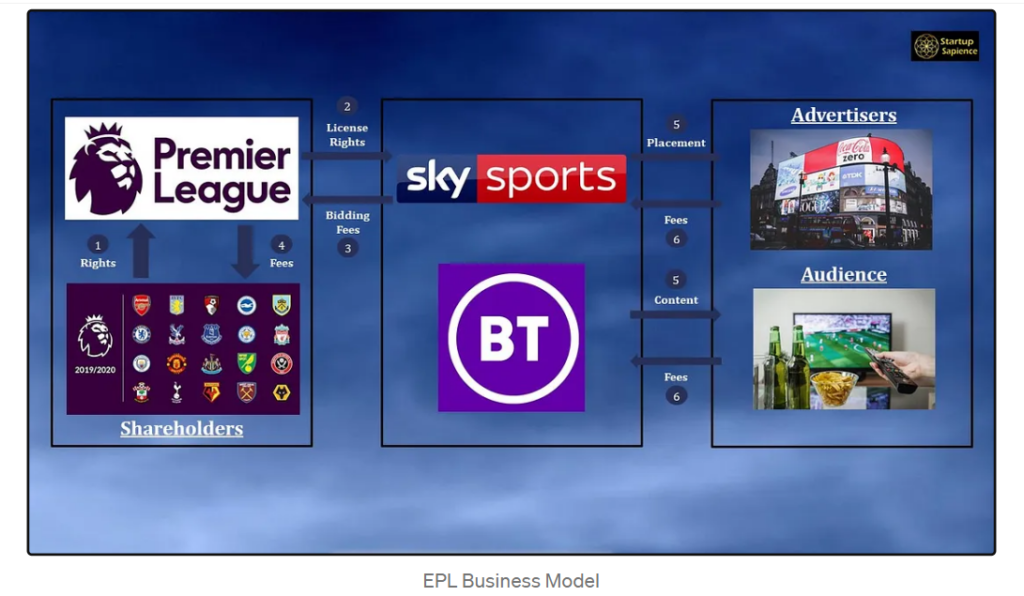
The clubs revoke the league’s broadcasting licences, which are subsequently granted to broadcasters like Sky Sports and (British Telecom) BT. These broadcasters typically participate in a bidding procedure to secure the rights to the games, after which they bill their viewer’s subscription fees and charge advertisement placement fees.
The earnings from the international broadcasting rights, it is split equally; however, beginning with the 2019–2020 season, any increase will be distributed to clubs in accordance with their standing in the league standings. The value of the Premier League’s global television rights in 1992 was £40 million. They are apparently worth £3.83 billion at this time. Domestic rights for the Premier League are sold in six different packages at auction every three years, with the most expensive deal costing Sky Sports £9.3 million per game.
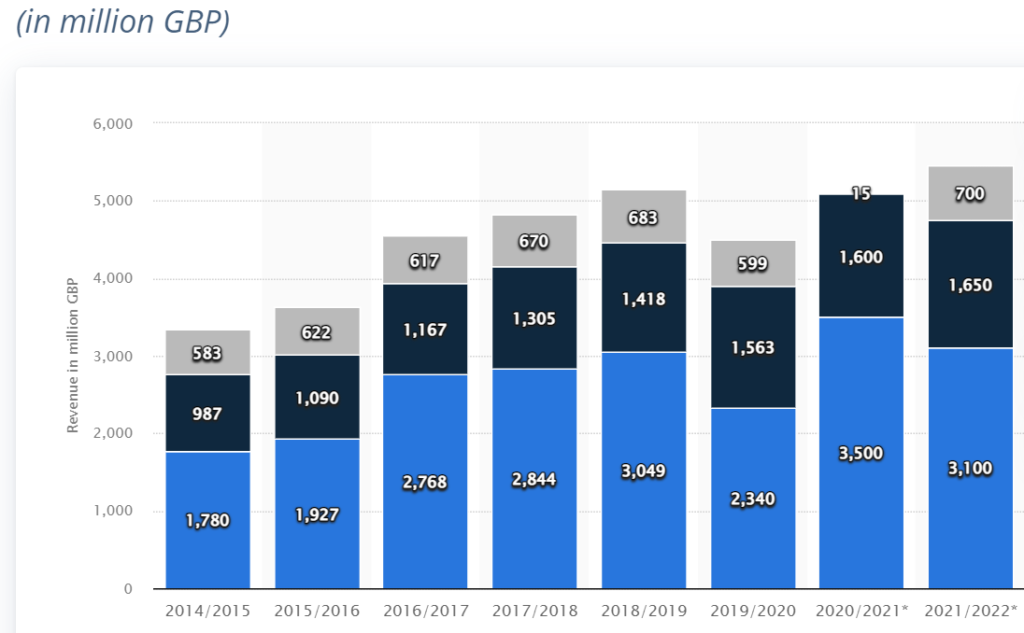
The EPL generates commercial revenue through sponsorship and merchandise sales in addition to broadcast revenue, which is naturally split evenly among the clubs. Let’s now examine the economics of each individual team at a deeper level. The maker of the clubs’ uniforms and the shirt sponsor are their two primary sponsors. Nike and Adidas pay the clubs to create the uniforms in exchange for a cut of the proceeds from fan purchases. The club receives payment from shirt sponsors to have their logos put on the jerseys.

If we use Manchester United as an example, Chevrolet pays them 64 million pounds annually to have their emblem on Jersey while Adidas pays them 75 million pounds annually to design the jerseys. That might potentially rise to 70 million pounds starting with the next season. Clubs are also permitted to have a sleeve sponsor in order to generate even more revenue. Matchday money is another clear source of income for teams. This is the revenue teams receive from ticket sales to spectators during home games. Old Trafford, home of Manchester United, holds the record for being the league’s largest stadium, with a capacity of about 75,000.
How is the world’s most profitable league a boon to the UK economy?
During the 2019/2020 season, the league contributed largely to aid the UK economy. Analysis shows that £7.6billion was added to the economy in that year, which would have been higher if the League had not been shut down because of the pandemic
• Of the £7.6bn ($9.9bn), £3.9bn ($5bn) came from “direct impact,” which included matchday and commercial revenue, employees, broadcasting, and sponsors. This money was produced by the Premier League and its clubs.
• “Indirect impact” refers to all economic activity produced by the club and Premier League supply chains as a result of direct impacts, such as the building and construction industry or the hospitality sector, and it totalled £1.5 billion ($1.9 billion).
• The most recent £2.1 billion ($2.7 billion) came from “induced impact”—all the output and employment brought on by people using products and services like TV licences or TV engineers.
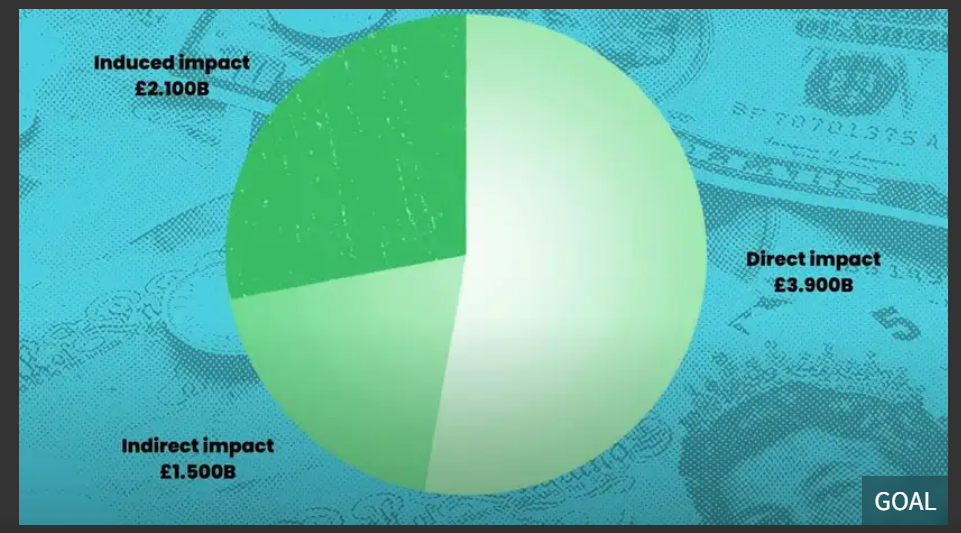
Since the 1998/99 season, the leagues and its club’s activity has risen by 840% and has generated a massive amount of £3.6 billion, as tax for the country. Clubs have a key role in the tax revenue collected by the government as it has risen by £3.1 billion since 1999.
“This new report from EY shows how we and our clubs continue to contribute significantly to the UK economy and have delivered much-needed assistance to all levels of football and communities” said Premiere League’s Chief Executive Richard Masters, last year.
While tax revenue helped the British government, the football tournament created 100,000 jobs every year, making a huge impact on the economy. These jobs have helped people from experiencing poverty which further assisted the GDP growth in 2022. People living outside London, have faced a major economic impact than the city residents which shows that Premier Leagues are not limited to one geographical area. 72% of the economic benefit is outside of London.

To add on, UK’s economy was sluggish and had just avoided a recession until December 2022. However, since January 2022, economic growth had returned majorly due to the contributions of the Premiere League. Research depicts, that output had risen by 0.3% since December 2022 where output fell by 0.5% then.
The economic benefit gained doesn’t stop here, Premier League has caused the tourism industry to boost in the past 2-3 years. Over £442 million was generated by the tourism sector which consists of hundreds and thousands of domestic trips.
The UK GDP was roughly £2.2 trillion ($2.9 trillion) in 2020–2021. Sports & Entertainment, which includes the Premier League, is another one of those areas. So how much of the nation’s GDP was contributed by this one organisation? 0.33%. That is considerably more than Tesco, which accounts for 0.18% of the national economy, and AstraZeneca, but slightly less than BP, one of the largest British corporations, which accounts for 0.42% of the GDP. AstraZeneca provided 0.15% of the UK GDP in 2020, a significant year for them.
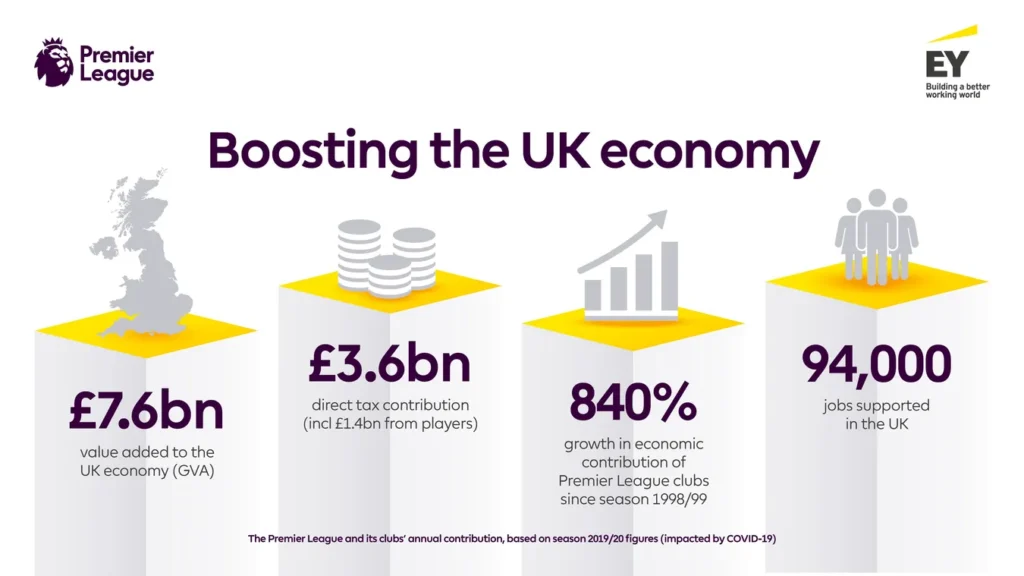
The Premier League is ahead of the competition when compared to other significant football leagues. The Bundesliga contributes approximately €5.1 billion (£3.9 billion/$6.6 billion) annually, or 0.2% of the German economy. La Liga, on the other hand, is anticipated to generate €1 billion (£770 million/$1.31 billion), or 0.1% of Spain’s GDP.
The English Premier League plays a significant part in supporting the UK economy’s development in addition to its contributions to the sports industry. It’s undoubtedly a blessing in disguise for the nation, which is on the verge of experiencing “Stagflation.”
This information is correct and factual to the best of the author’s knowledge, but it is not intended to replace formal, customized advice from a competent professional. This content is not plagiarized, and it is not intended to offend anyone’s feelings.
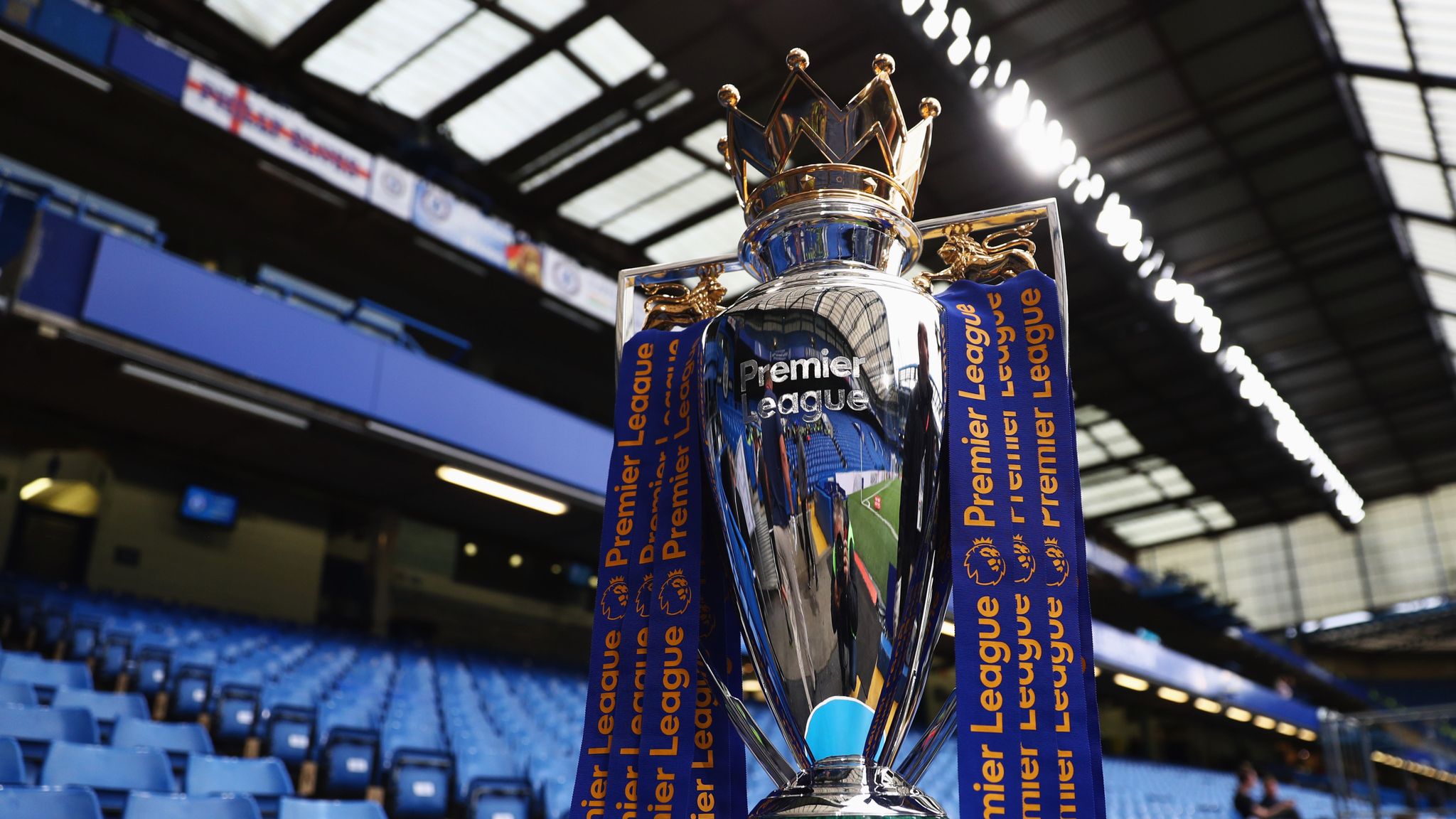

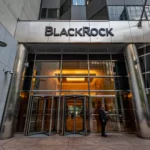
Very informative article well researched and written beautifully. Keep up the good work. Really impressed.